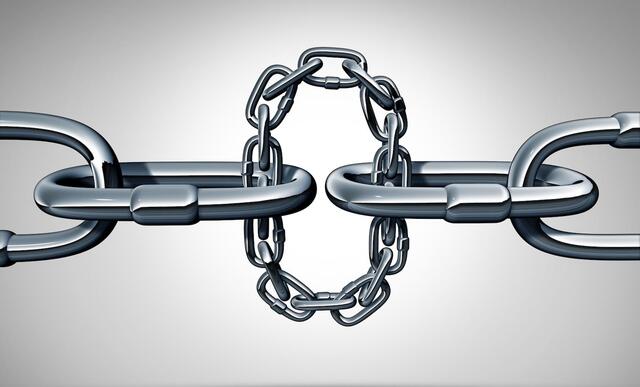SAP’s Supply Chain Control Tower – Providing end-to-end visibility
Key Takeaways
⇨ Having a reliable and efficient supply chain is essential for success as companies must be able to respond quickly to changes in demand.
⇨ SAP’s supply chain control tower is a centralized platform that provides real-time visibility and control over all aspects of the supply chain.
⇨ With real-time visibility, impact analysis, recommendation generation, and action tracking capabilities, a control tower can help companies optimize their operations, reduce costs, and stay ahead of the competition.
Improving Visibility, Analyzing Impact, Recommending Solutions, and Action
In today’s fast-paced, highly competitive, and disruptive business environment, having a reliable and efficient supply chain is essential for success. Companies must be able to respond quickly to changes in demand, manage inventory levels, and maintain strong relationships with suppliers and partners.
With the increasing interconnectedness of businesses (network economy) and the growing reliance on global supply chains, it is more important than ever to have a centralized platform that provides real-time visibility and control over all aspects of the supply chain. This is where SAP’s Supply Chain Control Tower can play a critical role.
SAPs supply chain control tower is a centralized platform that provides real-time visibility and control over all aspects of the supply chain. This command center uses advanced technology, such as artificial intelligence, machine learning, and big data analytics to gather and analyze data from all relevant processes (plan, source, order, and fulfill) and sources such as transportation systems, supplier portals, customer order systems, weather data, etc. Companies can get benefits from a Supply Chain Control Tower as mentioned below.
Visibility: Visibility is the foundational function of a supply chain control tower. By providing real-time insights into the events and performance of supply chains, companies can leverage data and gain actionable insights from it. Improved visibility can help predict or foresee disruptions and challenges in the supply chain. For instance, transportation delays would lead to increased lead times and inventory challenges. A surge in infections or severe weather conditions can lead to a change in the short-term demand signals.
Analyze Impact: With advanced technology, a supply chain control tower can establish contextual linkage of the information and analyze the impact to the business. It can help companies analyze the impact of potential disruptions, such as natural disasters, severe weather conditions, geopolitical events, or supplier shutdowns and use advanced analytics, predictive modeling, or simulation to identify bottlenecks and areas of inefficiency. This offers the opportunity to identify potential risks and help companies proactively respond to them, minimizing their impact on the supply chain.
For instance, a control tower can report on customer demands affected by specific supply disruptions. Leveraging data from weather reports or agencies, companies can not only influence the short-term demand signals, but they can also highlight its impact on inventory levels, risks of stock outages, etc.
Recommendations: By leveraging advanced technologies like machine learning, modeling, and simulations, a supply chain control tower can create recommendations to address bottlenecks and propose solutions to tackle disruptions. This could include changes to inventory levels, transportation routes, or supplier relationships. For instance, supply disruptions can be mitigated by reallocating inventory to customer demands based on priority or by reducing lead times by using alternate modes of transport or increasing the resilience of near-shore suppliers. These recommendations would be paired with the cost of these solutions, namely, the impact on cost due to mode of transport changes or leveraging near-shore suppliers, etc., so that the companies can make informed decisions.
Action: Once the recommendations have been generated, the supply chain control tower can help companies act by providing a centralized platform for executing and tracking the implementation of the recommendations. This can help ensure that the recommended changes are effective and efficient, and that the desired results are achieved.
Logical Architecture
The key to the success of a control tower is that it is a tightly integrated centralized platform that leverages existing systems to achieve the desired outcome. The idea is not to create a parallel system but to leverage data and capabilities of the systems that play a role in various supply chain functions. Below are the components that supply chain control tower architecture uses for providing benefits.
Visibility: It leverages the data from source systems like ERP, transportation systems, supplier portal, and customer order systems versus creating new data sources.
Analyze Impact: It leverages, enhances, and complements the designated system and its capabilities to analyze the impact versus recreating capabilities in the control tower. For instance, it leverages existing planning systems to understand the impact on the demand due to supply disruptions. This ensures consistency and efficiency of the control tower solution.
Recommendations: Leverages, enhances, and complements the designated system and its capabilities to create recommendations versus recreating capabilities in the control tower. This ensures consistency and efficiency of the control tower solution.
A supply chain control tower is a valuable tool for companies looking to improve their supply chain performance. With real-time visibility, impact analysis, recommendation generation, and action-tracking capabilities, a control tower can help companies optimize their operations, reduce costs, and stay ahead of the competition.








